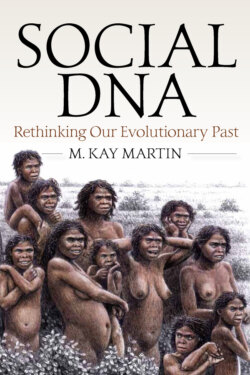Читать книгу Social DNA - M. Kay Martin - Страница 18
На сайте Литреса книга снята с продажи.
Size Matters
ОглавлениеAnisogamy, simply defined, is sexual reproduction involving the fusion of gametes of different size or form. In humans, a large, slow-moving egg cell (ovum) is fertilized by a tiny, highly mobile sperm cell (spermatozoon). Egg cells, which are over eighty-five thousand times larger than sperm cells, contain DNA, mitochondria, nutrients, and the resources essential to support new life. Females are born with about 2 million egg cells, only four to five hundred of which will ripen (one each month) over a fertile lifespan, with the remainder degenerating over time. Sperm cells also contain DNA and mitochondria but no nutrients, and are instead optimized for mobility. Gamete production in males is continuous, with about 100 million sperm cells generated daily, or an estimated 2 trillion over a lifetime.
Anisogamy, by its very nature, creates disparate but complementary reproductive roles and strategies. Females produce a small number of nutrient-rich eggs that emit pheromones to attract male sperm for fertilization. Males, in contrast, produce huge numbers of sperm cells that must vie with one another in their typically ill-fated race to unite with an available egg. Since the demand for eggs is greater than the supply, ova enjoy much better odds of passing along their DNA to the next generation than do individual spermatozoa. The greater reproductive investments required of females by gestation and lactation also have the effect of delaying ovulation, thereby further restricting the supply of eggs potentially available to sperm for fertilization. These factors combine to make females the primary limiting resource in male reproductive success.
The traditional textbook version of how the fusion of ova and spermatozoa occurs typically begins with the egg being swept up into the fallopian tube and drifting toward the uterus. Sperm cells released in the vagina move through the female genital tract and race toward the large and essentially dormant egg. At the climax of this intense and somewhat perilous journey, the first among the thousands of sperm to arrive, successfully attack, and forcefully breach the egg’s zona or protective barrier wins, and fertilization occurs. This scenario thus paints female gametes as the passive recipients of male competition and penetration, and male gametes as active contestants and penetrators of the coveted target.
